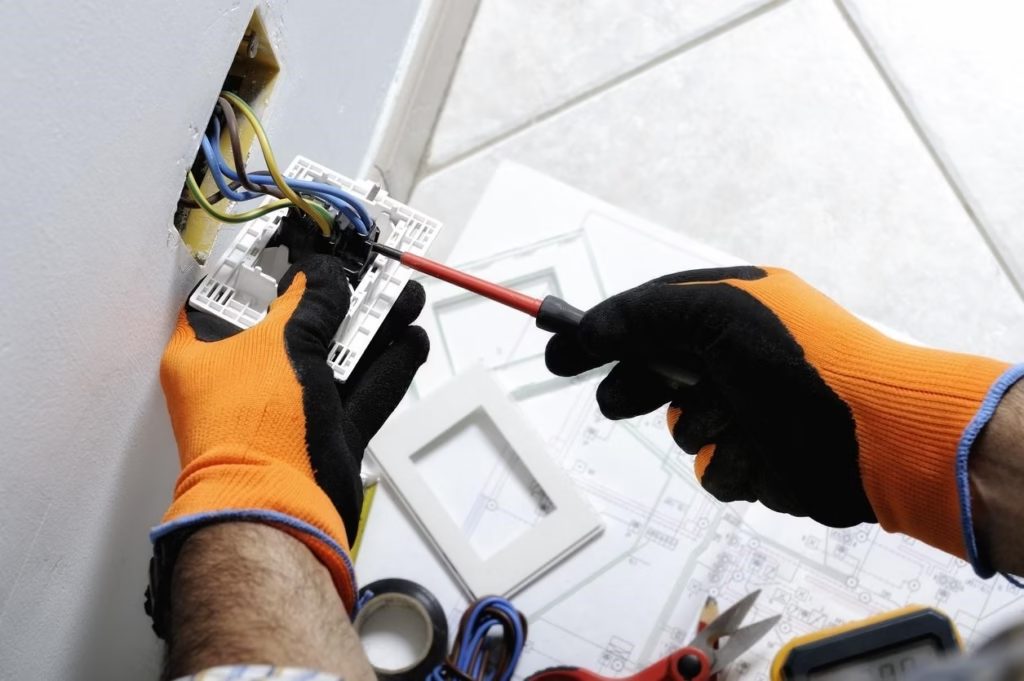The Best Way to Install Floating Shelves Without Drilling

For anyone who wants to install floating shelves without drilling there is now a solution. In this article we will explain how anyone could install floating shelves without drilling in the wall. This method may be especially useful if your landlord does not allow you to drill holes in the walls.
This page contains Amazon affiliate links. If you purchase through them, HomeNerdy earns a commission at no extra cost to you.
7 Simple Steps on How to Install Floating Shelves Without Drilling
Required Tools:
- Pencil
- Bubble Level (often included with the floating shelf)
Time to complete:
20-30 minutes.
Knowing the right technique can make all the difference.
Just like with cleaning yellowed plastic.
Step 1: Buy a hollow/light floating shelf and adhesive pads
First, we will need the right materials to get the job done. So pick your floating shelf online and don’t forget to order adhesive pads too. If you already have everything, then please follow on to the next step.
Step 2: Prepare the wall and floating shelf
The right preparation is half the work so they say. Before you get started with the instalment it is important to clean both the wall and the floating shelf. Make sure dirt and dust are gone so that the adhesive pads can do their work in the following steps.
Step 3: Mark the position on the wall
Hold the floating shelf against the spot on the wall where it needs to go and rest the bubble level on top. Make sure the bubble level sits in the corner between the wall and the top of the floating shelf. Once the bubble level indicates that it is level you can carefully mark around the edges with a pencil. From these marks, you should now be able to tell where the floating shelf should go.


Step 4: Affix adhesive pads to the back of the floating shelf
You’ll need strong adhesive tape in order to hang the shelf, so make sure it’s suitable for the job. If you’re not sure if the adhesive tape you’ve selected can keep your shelf and any objects on it: check the capacity first. We generally recommend command strips. As they can support up to 15 pounds, which is a lot more than other brands offer.
Step 5: Press the floating shelf firmly onto the wall in the desired position
Now that you’ve affixed the adhesive strips to the back of the floating shelf, it’s time to press the shelf firmly onto the wall in the desired position. Make sure that you place it between the pencil marks you created in one go. It’s better not having to readjust it.
Step 6: Check that your floating shelf is level
Place the bubble level on top of the floating shelf again to check if it is still level. If it’s not level. Remove the floating shelf and go back to step 2. If you don’t mind it not being perfectly level you can leave it attached as well. Sometimes it’s so hard to tell with the naked eye that you might as well leave it as it is.
Step 7: Place items on the floating shelf
Place the first items on the floating shelf to test it out. Don’t put heavier items on it than the adhesive pads can handle.
Pro Nerd Tip #1
Take the weight of the floating shelf itself into account too when doing the math. The adhesive pads must support the weight of the floating shelf too.
Pro Nerd Tip #2
Please note that the side of the floating shelf that is closest to the wall should be able to handle the most weight. Due to this effect it is best to place heavier items closest to the wall. But this is someting you will get a feel for anyway.
Need More Help?
It’s completely normal to need a helping hand with a home project. If you’d rather not tackle the steps yourself, we offer a free handyman quote service. Just fill in your details below to receive a no-obligation quote from a local professional.

